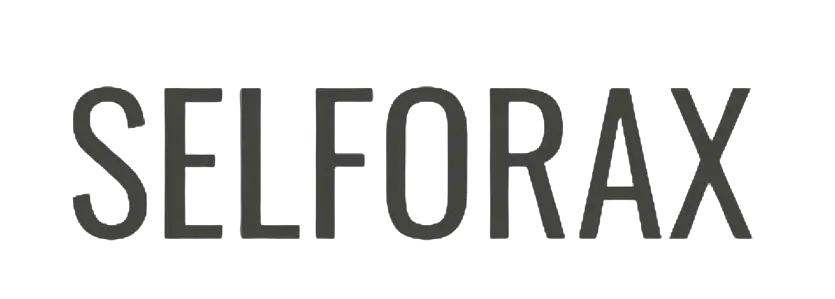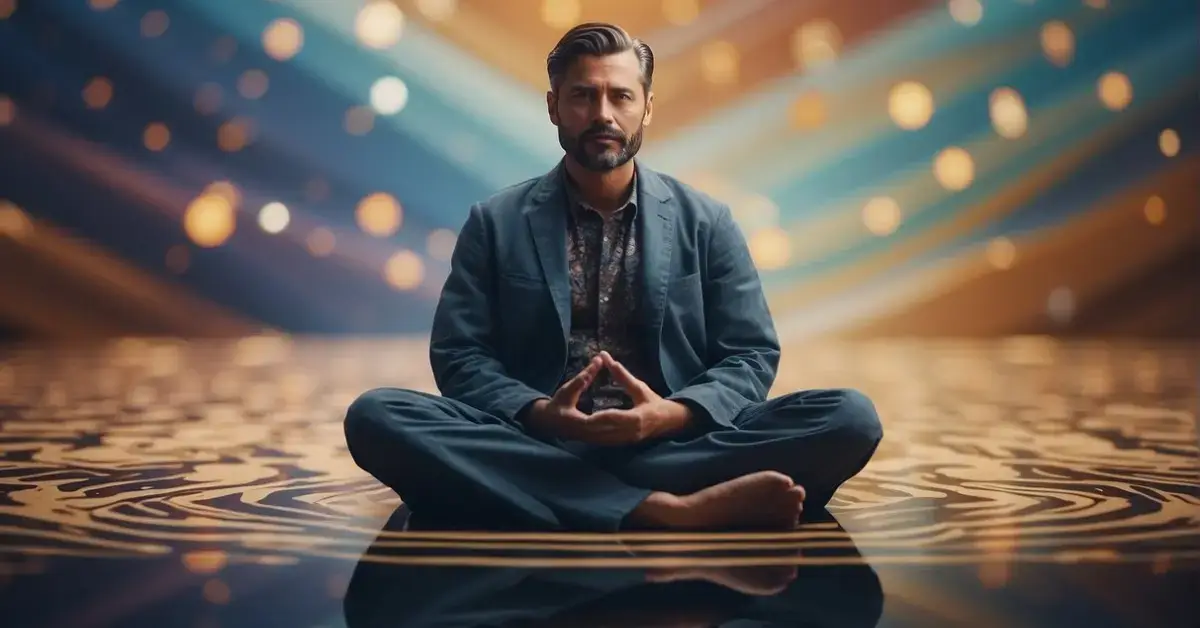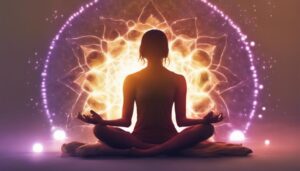“Explore the captivating world of ‘Meditation Art’ with our curated collection of visually stunning and spiritually enriching pieces.
From serene landscapes to intricate mandalas, each artwork is a portal to a deeper state of mindfulness and inner peace. Let these images guide you on a journey of self-discovery and contemplation.”
20+ Meditation Art




















Understanding Meditation Art
Meditation art is a unique blend that marries the calming effects of meditation with the expressive qualities of art. It’s an approach that I find not only enhances mental health and self-awareness but also fosters creativity and spiritual growth.
Defining Meditation and Art
Meditation is an ancient practice centered around achieving a deep state of peace and mindfulness. It’s a technique I use to quiet my mind, focus my thoughts, and often, to reduce stress and anxiety.
Art, on the other hand, is a form of expression that can capture a myriad of human experiences, allowing me to explore my creativity and self-expression.
When combined, these two elements create meditation art, a form of therapeutic activity that mindfully encourages relaxation and expression.
History and Cultural Significance
The integration of meditation into art can be traced back to various cultures that valued both the spiritual and aesthetic aspects of life.
Historically, the act of creating was often seen as a meditative practice—a way to connect with the divine or to find inner peace. In some traditions, such as Tibetan sand mandalas, the process of creation is itself a form of meditation.
The cultural significance of merging these practices has long been recognized for promoting emotional well-being and spiritual growth.
Benefits of Mental and Emotional Well-Being
From my experience, the practice of meditation art has profound benefits on mental and emotional health.
It offers a way to channel and alleviate stress, leading to greater relaxation. This can be particularly effective for those grappling with anxiety.
Engaging in this practice has allowed me to enhance my self-awareness, often leading to better mental clarity.
Practices and Techniques

In my journey with meditation art, I’ve discovered that it’s much more than just a way to relax; it’s a practice that requires patience, focus, and an exploration of various techniques and art forms.
Getting Started with Meditation Art
When I began integrating art into my meditation, the first step was all about simplicity. I chose to start with drawing meditation, focusing on creating simple shapes and patterns like mandalas or zentangles.
These exercises helped me to concentrate and allowed the meditative process to naturally flow. Picking up a pen and paper, I tried not to overthink; each stroke was a step toward mindfulness.
Materials:
- Paper: Any kind would do initially, though I found that smooth, high-quality paper gave me a better experience.
- Brushes/Pens: Fine liners or brush pens cater to different strokes and styles, vital for varied expressions.
Exploring Different Art Forms
My exploration then led me to try different mediums such as watercolor and sculpture.
There’s something uniquely mindful about watching colors blend on a canvas or feeling the texture of clay in my hands. Each art form anchors you to the moment in a different way.
Techniques:
- Watercolor: I used it for meditative painting, focusing on the flow of the paint and my breath.
- Sculpture: It became an exercise in physical mindfulness, grounding me through touch.
Creating an Environment for Art Meditation
Finally, setting up a conducive environment was crucial. I dedicated a quiet space as my meditation art corner, free from distractions.
This location is where I place my canvas or paper, prepare my brushes, and lay out my journal to track my progress.
Environment Checklist:
- Focus: Ensure the space is quiet and feels sacred to my practice.
- Meditation Accessories: Sometimes I include candles or incense to help deepen the meditative atmosphere.
Within this structure, I aim to incorporate mindfulness meditation techniques into my art-making, deepening both my artistic practice and my sense of inner peace.
Deepening Your Practice

As I’ve progressed in my meditation art journey, I’ve found that deepening my practice isn’t just about dedicating more time but also about integrating mindfulness, fostering personal growth, and ensuring the sustainability of my practice.
Integrating Mindfulness and Creativity
I’ve often noticed that when I allow myself to be fully absorbed in the present moment during art meditation, a sense of flow emerges. This state is where creativity and mindfulness merge, enhancing both my artistic expression and my serenity.
By focusing intently on the details of my work, I anchor myself in the now.
Techniques like breathing exercises or guided visualization can enhance this focus, allowing for deeper self-discovery and clarity. It’s about more than just creating art; it’s a tool for exploring and appreciating the nuances of the present moment.
Personal Growth and Community Involvement
My journey has taught me that growth often happens in the context of community. Participating in workshops and other communal settings allows me to share my creative expression with others, fostering empathy and compassion.
This engagement not only provides valuable stress relief but also imparts collective wisdom that fuels my growth.
As I interact, I sharpen my intuition and reinforce my connection with like-minded individuals, which is a powerful compass for my journey.
Sustaining Practice Over Time
Maintaining a consistent practice over time can be a challenge. I’ve learned that it requires curiosity and an ongoing commitment.
I use tips and insights gathered from various sources to keep my practice fresh and engaging. Setting a regular schedule and adapting activities to stay connected with my inner compass is crucial.
For example, sustaining calmness and keeping a journal to observe and reflect on my experiences provides ongoing insight into my practice.
Cultivating a habit of art meditation helps sustain my personal and artistic growth over time, allowing me to continually appreciate the unfolding journey.
FAQ – Meditation Art

What are the benefits of meditative art?
Meditative art offers several benefits that enrich both mental and emotional well-being. Practitioners often find that it reduces stress and anxiety, fostering a sense of inner peace. According to Skillshare, engaging in art meditation can help you be more present and less judgmental of your thoughts. Furthermore, it’s a form of creative expression that can enhance mindfulness and promote relaxation.
How can art be a meditative process?
Art becomes a meditative process when I focus deeply on the act of creating, often losing track of time as I get absorbed in my work. For instance, the Zentangle art method involves repetitive patterns that are simple yet engaging, making it easy to enter a meditative state, even without any artistic background.
How does art help with mindfulness?
When I paint or draw, my mind tends to concentrate on the present moment, which is a key aspect of mindfulness. Each stroke and color choice requires my attention, which aligns closely with mindfulness practices. Planet Meditate explains that meditative painting uses the act of painting to focus the mind, which can significantly reduce stress and encourage a mindful state.
If you liked this blog post about the topic: Meditation Art, don’t forget to leave me a comment down below to tell me about your experience with it. Or have a look at my other articles:
Feel free to also check out our other Articles from the category “Meditation“ and don’t forget to follow us on Pinterest.




